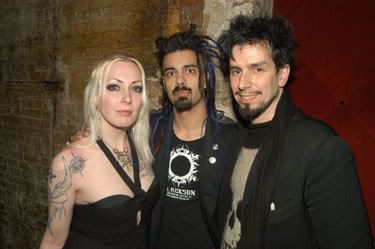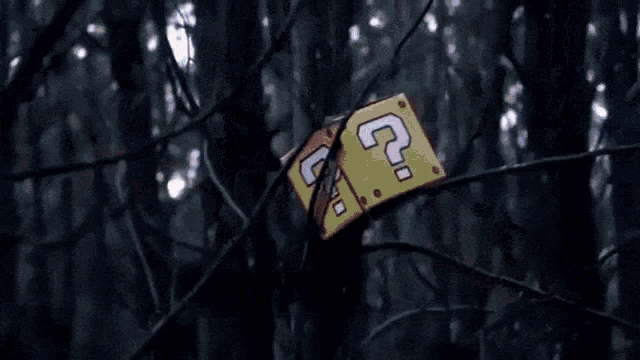We're back on the search for steamwave (which is Vernian Process' term, and frankly, one I'm going to nefariously adopt for the run of these entries, 'cos it's easier to have one term rather than "steampunk music"/neo-Cabaret/cinematic darkwave/American gothic/gilded age...gets cumbersome, you know?) again, and this time, we have a really interesting new group of bands and artists.

Let's start with Saul Williams, an anything-but-typical rapper and street poet. Now, again, this is a Vernian Process find, but I've been listening to some of his songs/poems, and they're hitting me with that same sort of stunning sense of revelation as when I first heard Conor Oberst of Bright Eyes. I don't know--yet--how he fits into steamwave as a growing genre, but much of his work has such resonant power, and it seems to be the same power which drives what I know of as steampunk--the drive to create, to remake, to reclaim, cast back, and re-image our worlds, through the eyes of an earlier time.
I defy you to listen to Coded Language by Williams, and not want to stand up and cheer. Or to go that one step further--not want to scream at the sky and go out and create something, build something, add to the universe rather than take something away.
Embracing Williams would bring us to a place where Ginsberg, Seal, in a sense, and Miles Davis, among others, can be added in to the influence pool, at least for now--not, perhaps, as large influences, but as traces seen, burn-off from the engines, fuel for the transformation.
You might have noticed I've done some shuffling and renaming of the ever-growing links and lists along the left hand side. I'd point your attention specifically to the top section, which is now going to be a rotating series of bands and artists under consideration. Influences I'm codifying, groups to keep touching base with, points of interest along the journey.
Which doesn't, per se, bring us to O'Death and Hoots & Hellmouth, but let's talk about them now anyway.

(O'Death performing at Moveable Type in 2006; photo by Heart on a Stick.)
Two more for roots music, H&H being more purely Appalachian revival, O'Death being clearly closer to the Legendary Shack Shakers (mentioned in other entries). O'Death is especially interesting as they claim influences as diverse as Neil Young, Prince, the Misfits and Dock Boggs. They're out of New York, and they directly hearken back to that land of juke-joints, grabbing whatever's nearby to keep the beat, singing because you have to, because you need to make the music you hear in your head.

(Hoots and Hellmouth: Rob Berliner on mandolin to the right, Sean Hoots and Andrew "Hellmouth" Gray, I believe; picture copyright D.L. Whit.)
Hoots & Hellmouth I don't have a lot of information on, other than the music they seem to make seems to be half plugged-in backwoods, half spiritual revival--they have the great ability to walk onto any stage and make it theirs. Varying anywhere from four to eight performers at a time, depending on venue, they're very much part of the movement that says, music should be made by musicians and lovers of music, not corporations, and should be heard live, as often as possible.
O'Death's Down to Rest, and Hoots & Hellmouth's Rattle These Bones.
There's also a few new bands at the side, and I'd like to mention Ego Likeness specifically.

(The members of Ego Likeness, Donna Lynch and Steven Archer, posing with Voltaire. Photo by Kyle Cassidy.)
Ego Likeness takes their name from a form of portraiture seen in the Dune series, which is not surprising, as the two members of the band are first and foremost, a writer and an artist. Ego Likeness are quite clearly gothic/darkwave, but there's something about them that keeps coming back to the heartbeat and the machine, which is why I'm thinking of them as a co-creator of the coming soundform, at the very least.
In fact, I'm willing to state we have our first linkpoint behind all these disparate sounds: percussion. Percussion on drum sets, on djoumbeks, on tin tubs and wooden pews, percussion pounded out with hands and sticks and wound gears, in clubs, on buildings, clapping hands and stomping feet--all comes back to the beat.
Severine by Ego Likeness.
Maybe it's time to add in Adam Ant as a general influence as well--it's certainly part of what he was trying to do: take the music of the time, strip it down, rescore it in a sense for percussive energy. Bits and pieces from a thousand different cultures, a thousand different soundtracks, into one energetic look and sound.
Finally, I'm going to end with a comment I left in an earlier entry--because I think it's relevant enough to repost here in the main:
I think eventually--for now, at least, maybe for some years to come--it's going to be that way: steampunk as a stylistic offshoot of neo-Victoriana, and as the Victorian/gilded age influence builds, so will steampunk, in look, approach, and sound.
I mean technically--though we can trace out influences earlier--the gothic movement really started in the 1970's, and it's taken the past thirty years to get from "for some reason they like dressing in black" to "they're goths".
It may well take an equivalent amount of time to be able to say "they're steampunks", or whatever term will arise out of what's happening now. And it's a slow cultural creep to that point.
In the meantime, we have a ragged disparate community of case modders, do-it-yourself-ers, neo-Victorians, burlesque dancers, musicians from various genres...all of which we are slowly linking together as pulling from the same cultural influences. I'd even go so far as to say it's a very large span of time we're all trying to embrace: just as the SCA spans everything from the tenth century (and sometimes before) to the mid-seventeenth, so neo-Victorian/gilded age converts seem to be spanning anywhere from the early eighteenth century to the 1920's, 1930's or so.
Which is why I'm including the 'weird americana bands', as you put it--because even though they seem to be tapping around the 1920's to early 1950's at the very latest, they're doing it within a similar framework. And there are bridge bands now--while the Shakers, f'rinstance, seem clearly to have their own niche, as stated, of American gothic, along with Hoots and Hellmouth, we have "bridge bands" stepping between Americana and the gilded age--Dresden Dolls spring unerringly to mind, but also, Beat Circus, and to some extent, the Residents, though they didn't get into the unsprung-calliope sound until much later.


4 comments:
Have I mentioned that Ego Likeness rocks my world? I really hope I'm responsible for you discovering them. Otherwise I will consider that I am shirking my duties.
shine on
Seraph, you may have mentioned them? I can't remember whether it was you or VP or a mention by another band that led me to their door; I do know that I love what they do, and that they're in that influence-for-steam/not-steam-precisely camp.
Not that it matters. They're good; that's the main thing.
Turner: I admit, I'm growing used to this occasionally being a music blog. Weird as that is for the train wreck.
Post a Comment